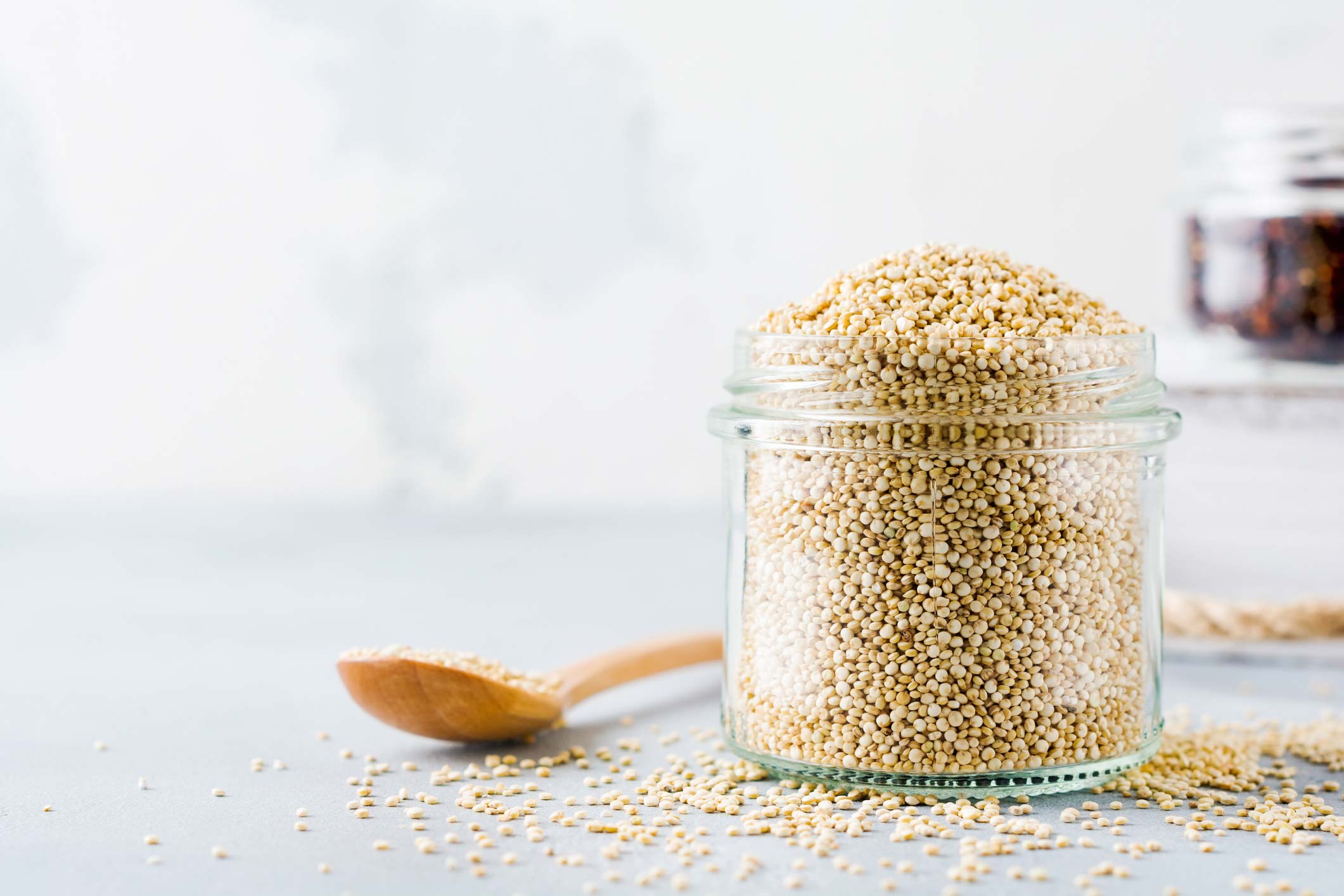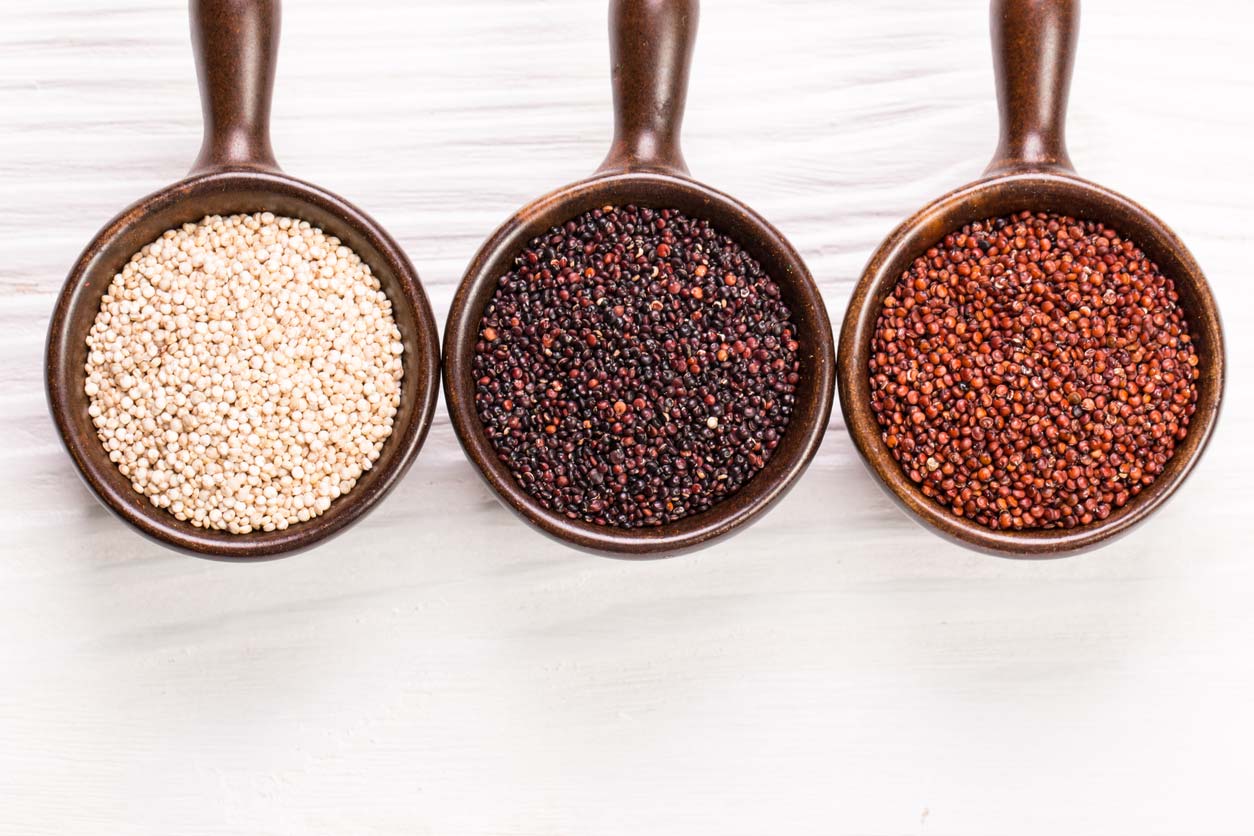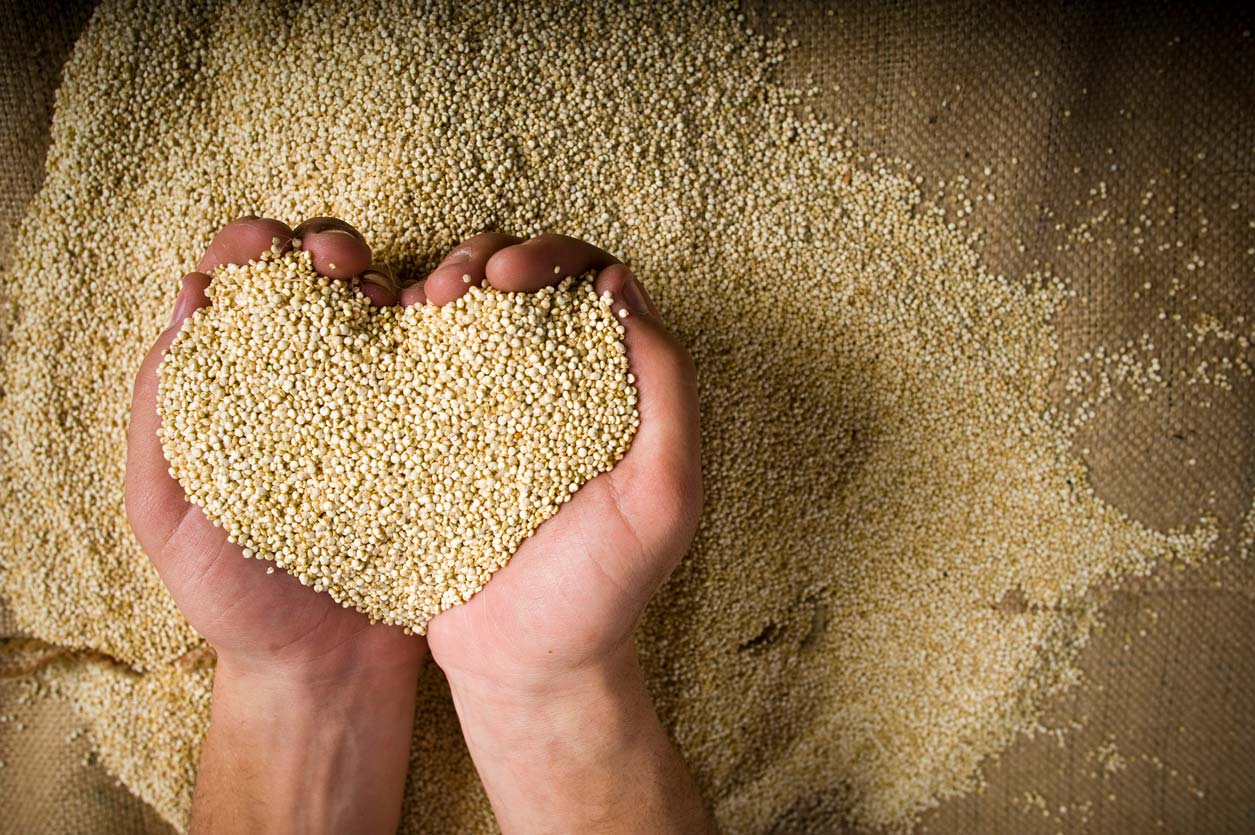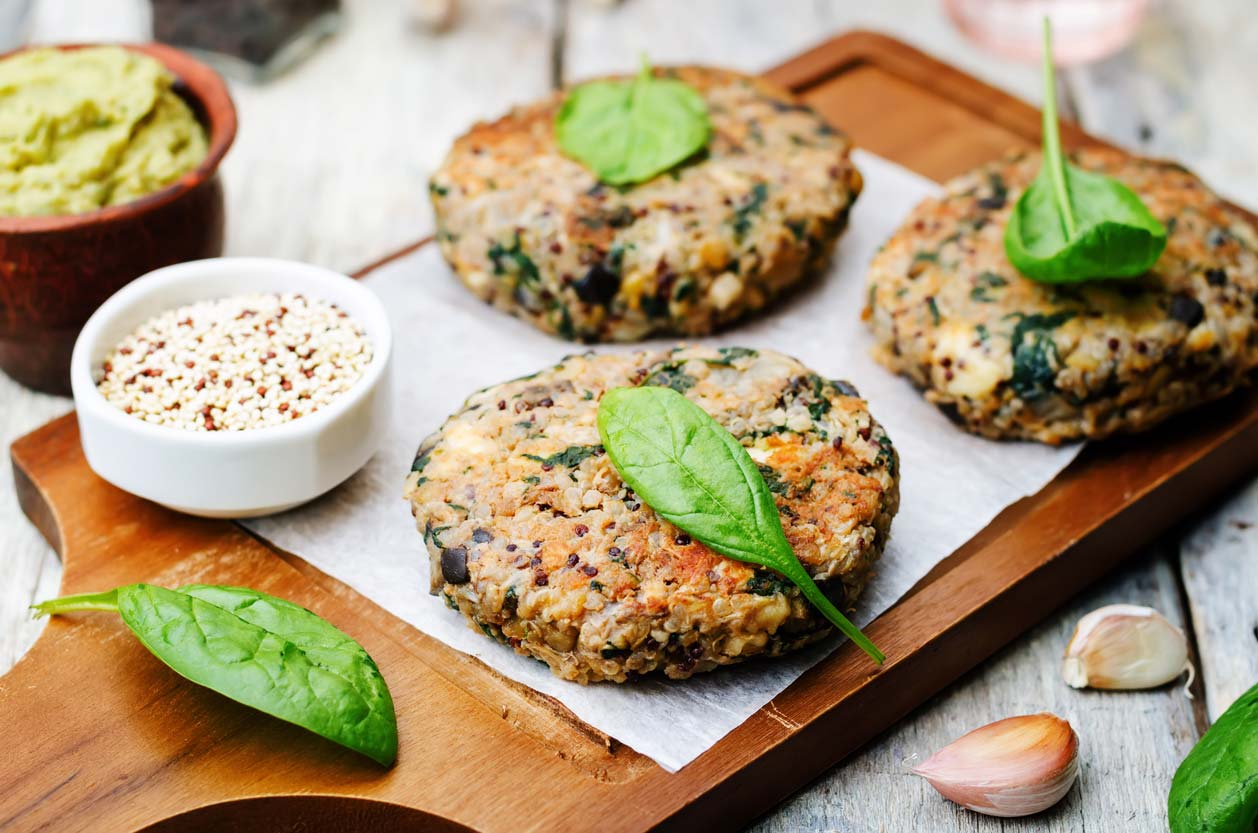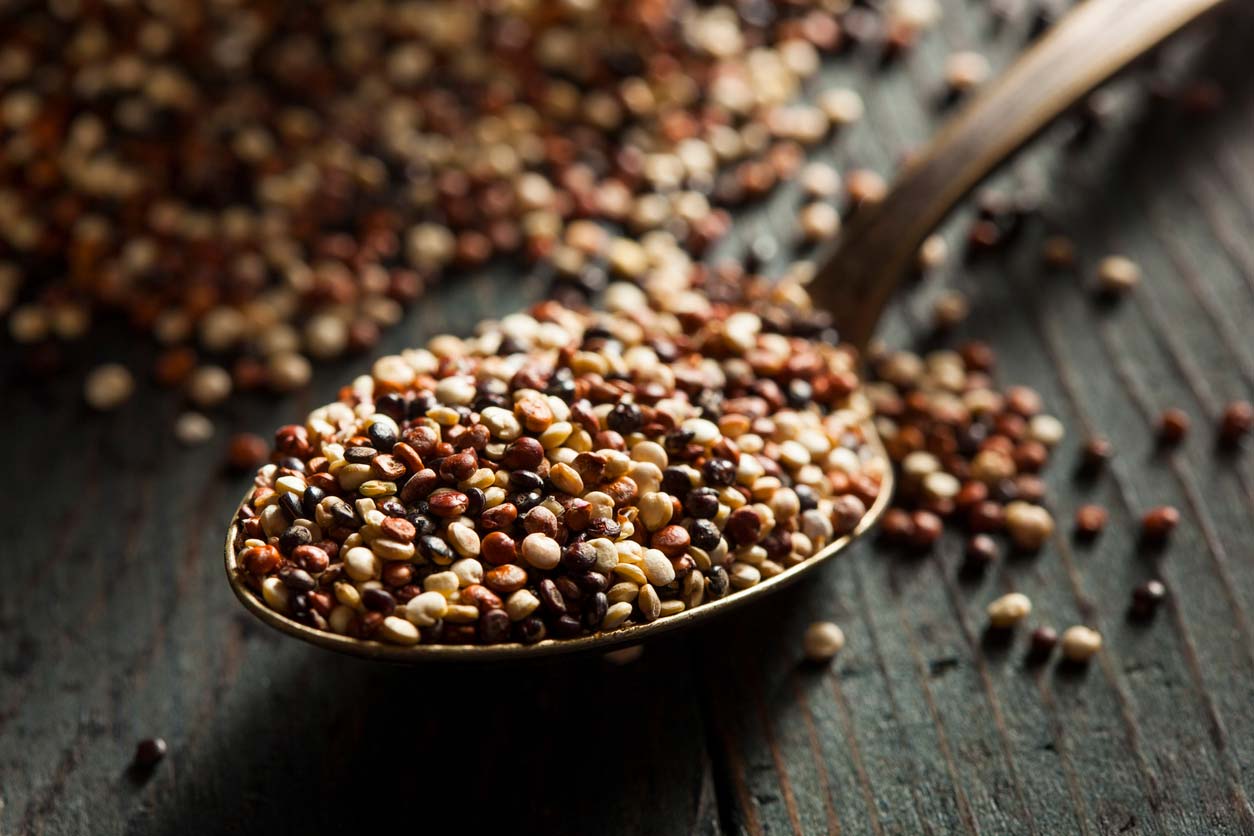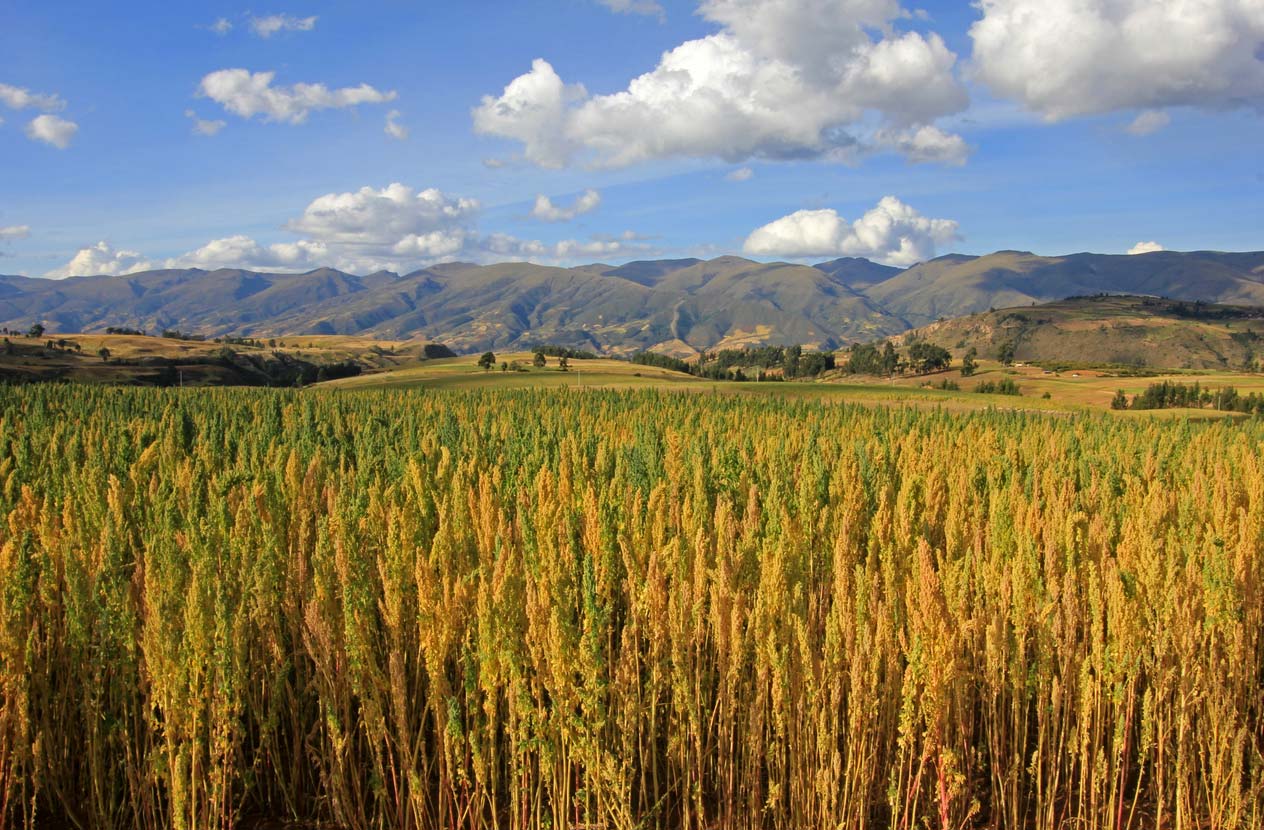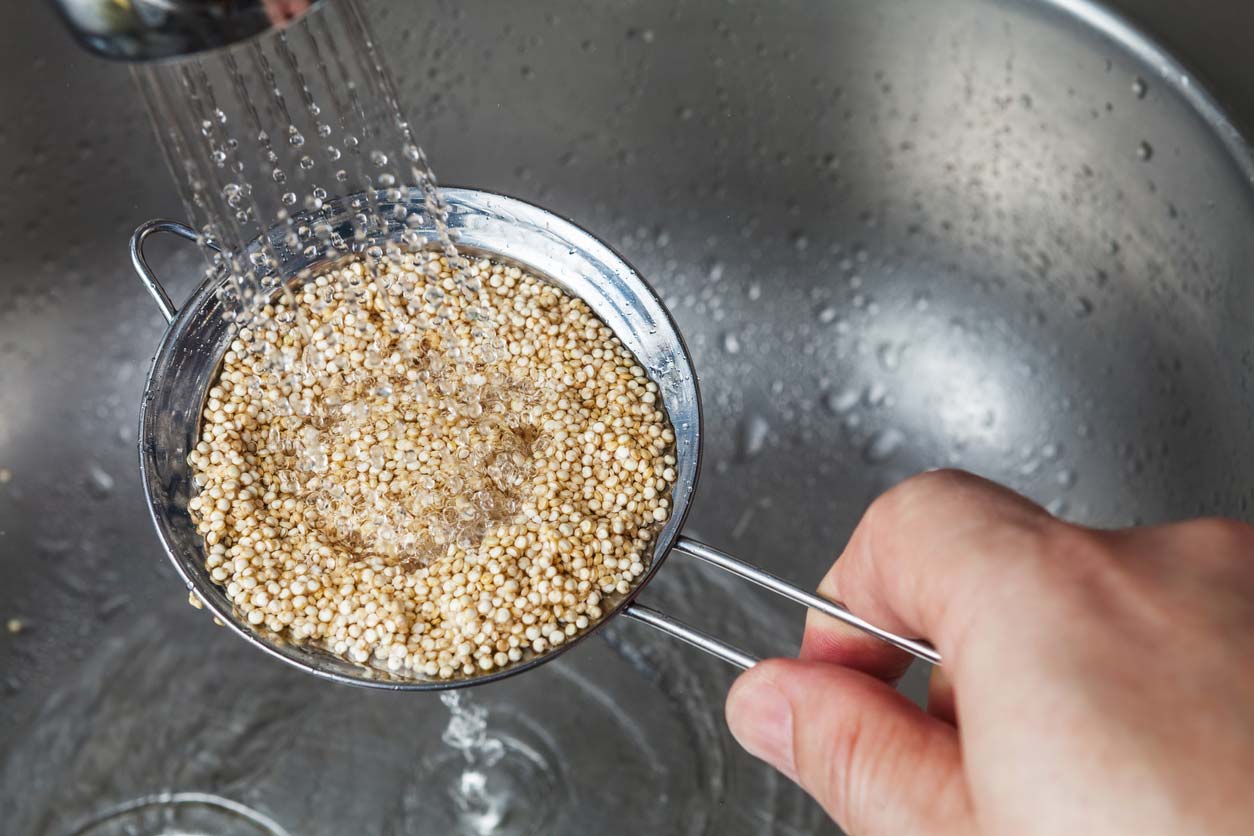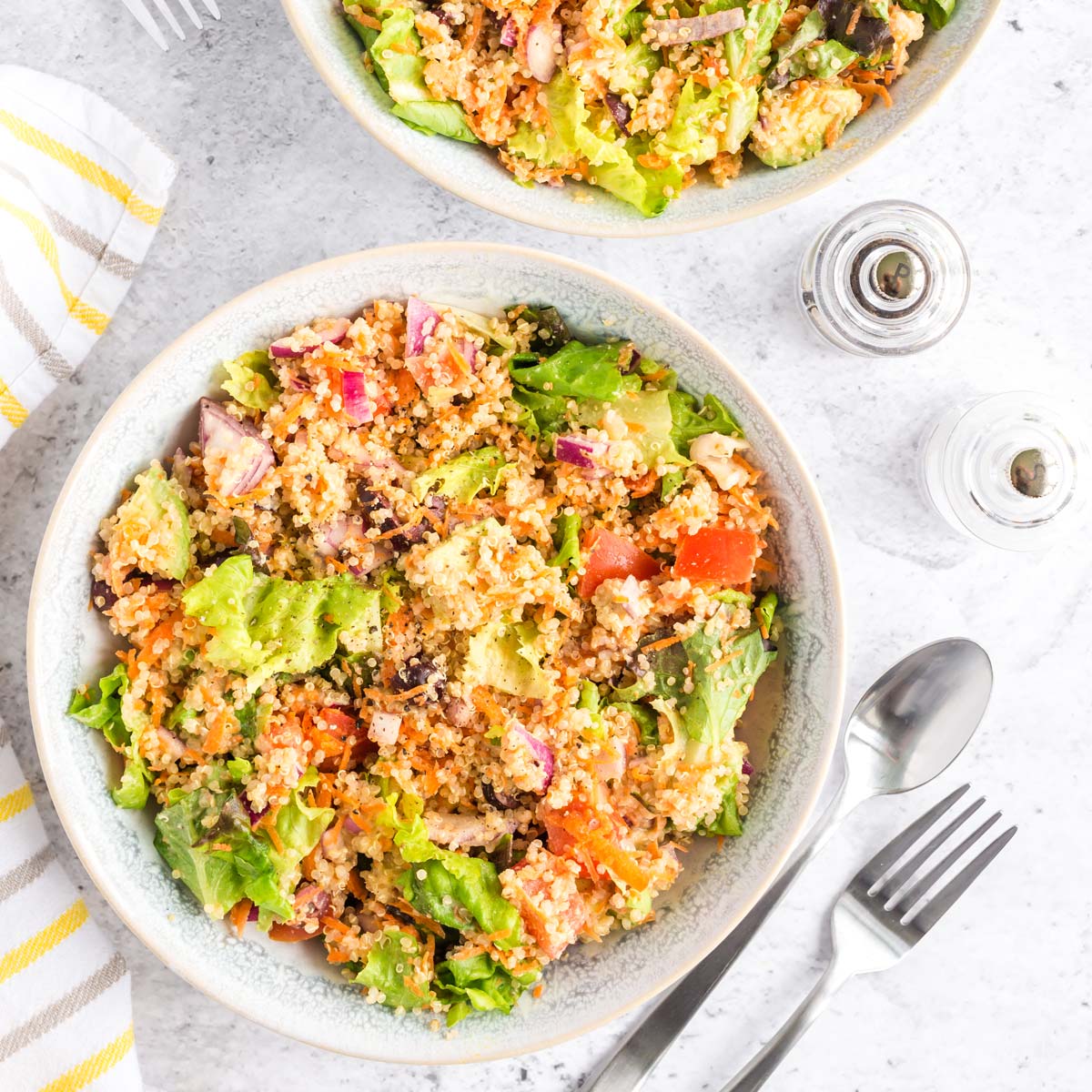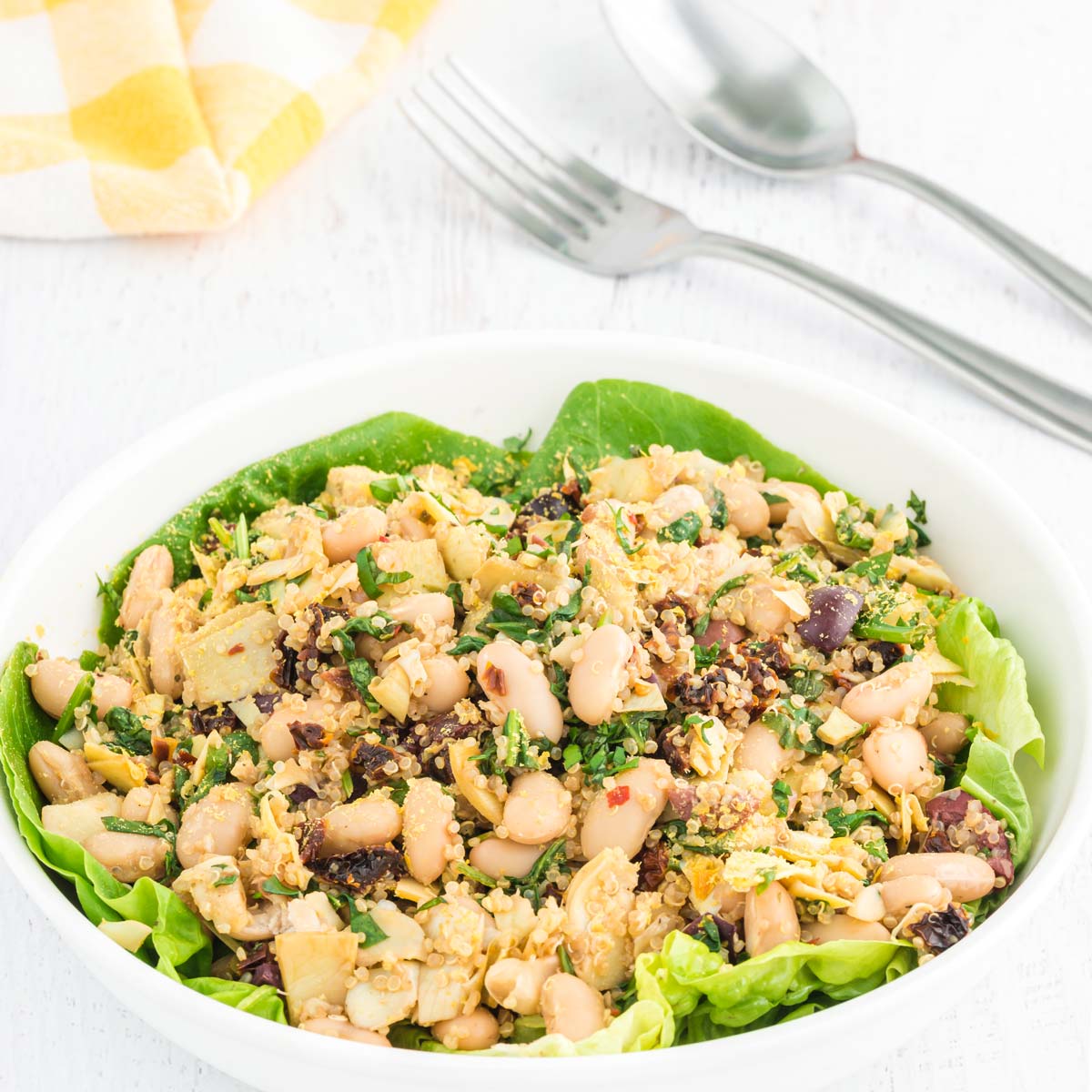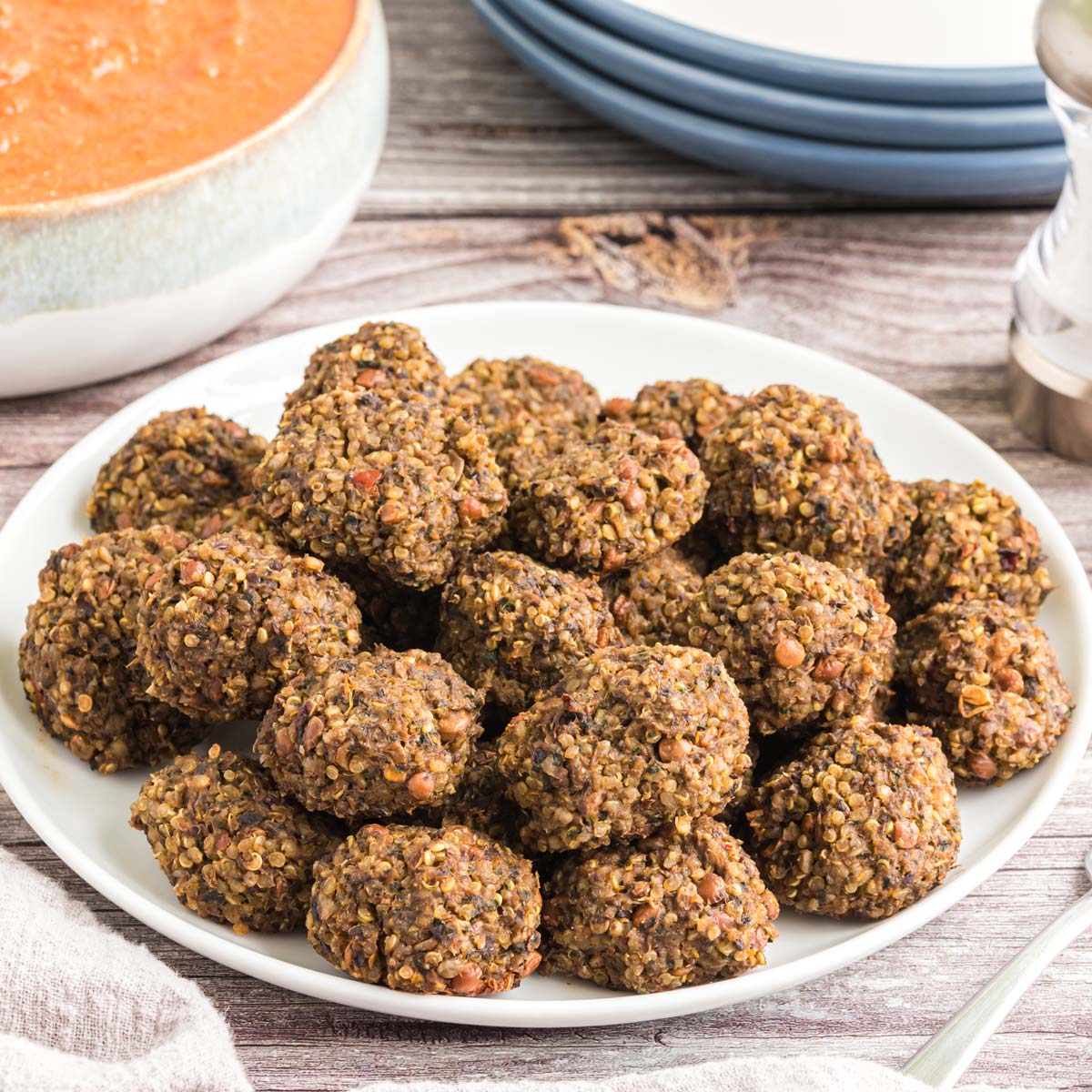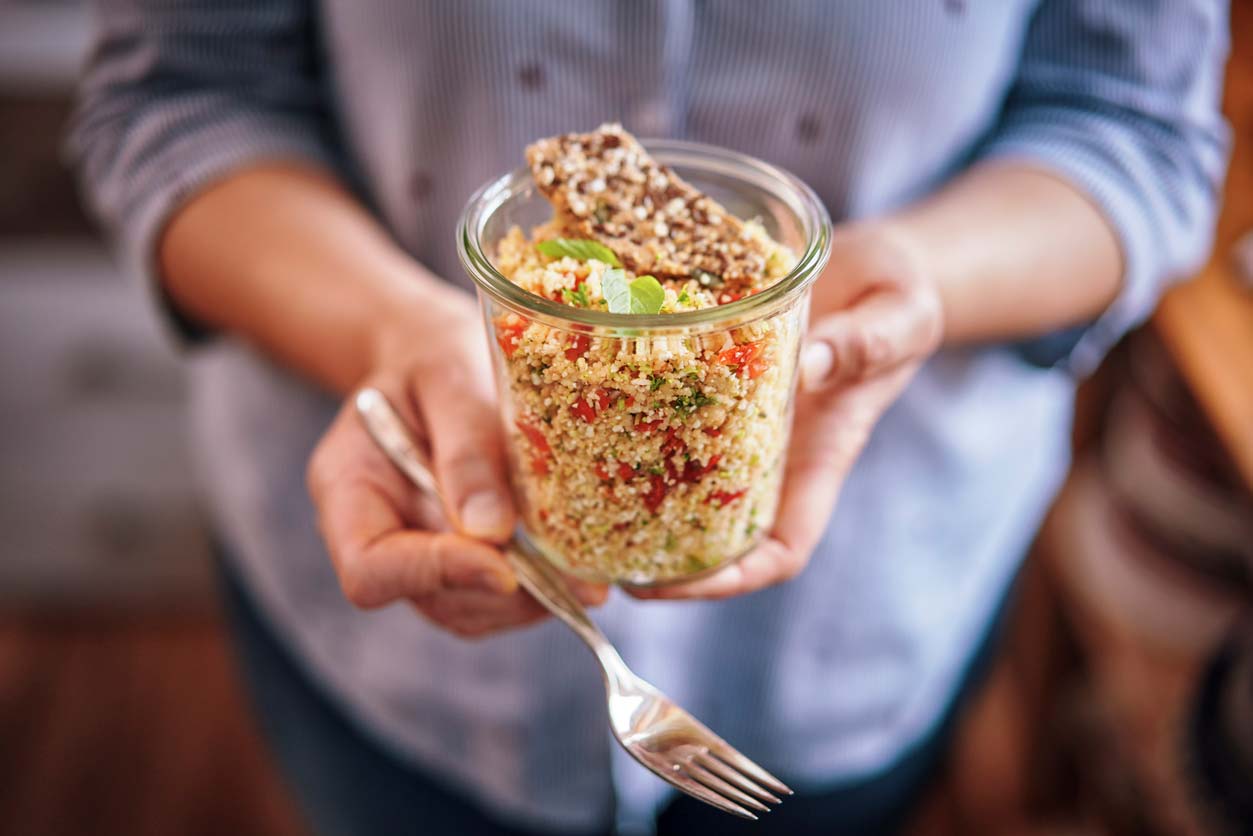Keen-what? Kwinowah? What is keenwah?
Gone are the days when health food devotees were the only ones who’d heard of — and could pronounce — quinoa. From a peasant staple in South America’s remote highlands to the “it” grain of foodies, quinoa has taken the world by storm.
Quinoa — pronounced “keen-wah” — has enjoyed rapidly increasing popularity over the past couple of decades, and for good reason. It’s a gluten-free, high in protein, and filling grain. It works well in breakfast bowls and porridges as well as quinoa salads, homemade veggie burgers, and casseroles — in addition to being a flavorful side grain. The crop grows in over 50 countries around the world, is highly nutritious, and boasts a number of health benefits that make it a valuable pantry staple. But what exactly is quinoa, and is all the hype justified?
What is Quinoa & What Does Quinoa Mean?
Chenopodium quinoa — quinoa’s botanical name — hails from the goosefoot family of plants, along with beets, Swiss chard, and spinach. Chenopodium literally means “little goose’s foot” in ancient Greek, since the leaves of some of quinoa’s relatives do resemble aquatic webbed feet — at least once you know to look for the resemblance. The word quinoa comes from the Quechua, an Andean language that hails from Peru.
Quinoa as we know it was first cultivated high in the Andes Mountains in Peru and Bolivia and constituted a major part of the traditional Incan diet. This region is still the largest producer of quinoa, responsible for over 80% of the global supply. And while quinoa was once considered peasant food, it became more popular in the 1970s in health food circles in North America and Europe. Today, farmers are producing quinoa in the Rocky Mountains of the United States, as well as many other regions of the world.
There are three main types of quinoa, which can be identified by their colors: traditional (white), red, and black quinoa. You might also see tri-color varieties where the three colors are mixed.
Is Quinoa a Grain or a Seed?
So what is quinoa, really? Quinoa is a small, lightly-colored, spherically-shaped “grain.” But I put “grain” in quotes because quinoa isn’t technically a cereal grain at all. Quinoa falls into the category of pseudocereals (like amaranth, buckwheat, and chia), which are basically seeds that are prepared and eaten like grains.
The quinoa seeds are the main edible part of the quinoa plant, though its leaves are also edible. Since quinoa is gluten-free and higher in protein, it’s often touted as a healthy alternative to rice, especially since, unlike rice, it contains, at most, negligible amounts of arsenic.
When I tried to figure out the difference between a seed and a grain, though, I got a headache. Merriam-Webster defines seed as “the grain… of a plant used for sowing.” When I looked up “grain,” I got “the seed… of a cereal grass.” So seeds are grains, and grains are seeds. I’m just going to have to let that debate rage on since, ultimately, quinoa is both.
Quinoa Nutrition
Quinoa is a nutrient-dense food. In just one cup (185 grams) of cooked quinoa, you’ll find a little over 200 calories and a number of vitamins and minerals. Quinoa is also a particularly good source of manganese, magnesium, folate, phosphorus, and copper. And it also offers some iron, zinc, and B vitamins.
That same serving of cooked quinoa also contains eight grams of protein, including all nine of the essential amino acids that your body can’t make on its own.
Seventy percent of the calories in quinoa come from carbohydrates. And they are complex carbohydrates rather than the kind found in refined grains and sugars. In addition, quinoa contains a little over five grams of fiber per cooked cup, which helps keep it low on the glycemic index. This means that quinoa doesn’t spike your blood sugar the way that, for example, white rice or birthday cake does.
6 Quinoa Health Benefits
Don’t let the tiny size of the quinoa seed fool you, though. Not only is quinoa packed with nutrients and is a tasty addition to a number of dishes, studies on quinoa, and its unique compounds, have found some impressive health benefits.
1. Quinoa may have anticancer properties.
Quinoa is rich in antioxidants and phytochemicals that may help protect cells against oxidative diseases like cancer. One 2018 study found that 17 potential bioactive peptides derived from quinoa had powerful antioxidant properties, showing the ability to inhibit colon cancer cell growth in a lab setting. The authors suggested that these peptides could be used in the development of functional foods aimed at reducing diseases related to oxidative stress, like cancer. An even more recent 2020 report in the journal Critical Reviews of Food Science and Nutrition came to similar conclusions. The authors stated that gluten-free pseudocereals (like quinoa) have peptides that have promising anticancer, antioxidant, and anti-inflammatory properties relevant to human health.
2. Quinoa may protect against heart disease and metabolic syndrome.
Enjoying quinoa may help keep some heart health biomarkers, like blood fats, in an optimal range. A 2017 dose-response randomized, controlled, single-blind trial compared the impacts of 25 and 50 grams of quinoa consumed per day for 12 weeks, among 50 overweight or obese individuals. The researchers found that the group who consumed 50 grams of quinoa daily experienced an average reduction in triglycerides of 1.14 to 0.72 mmol/L, as well as a 70% reduction in the prevalence of metabolic syndrome.
3. Quinoa advantages may include regulating blood sugar.
In a 2017 study, 30 prediabetic participants were randomized into two groups, to either receive processed quinoa or a placebo (maltodextrin) for 28 days, before and after which BMI, HbA1C (a measure of long-term blood sugar levels), satiety, and fullness were assessed. The quinoa group experienced a significant reduction in BMI and HbA1C values and an increase in reported feelings of satiety. The placebo group had no significant differences.
4. Quinoa grains may support healthy weight loss and maintenance.
Quinoa could be an excellent staple food to include in your diet if you’re looking to achieve a healthy weight. In a 2015 review, researchers concluded that quinoa consumption is able to effectively increase satiety and feelings of fullness, reduce fat tissue, and even lower inflammation related to obesity. Quinoa is a high-fiber food, which may help prevent overeating and excessive calorie intake, promoting healthy weight loss.
5. Quinoa may have immune-boosting properties.
According to a 2017 study, quinoa contains bioactive polysaccharides — a type of carbohydrate — that have promising potential as a natural antioxidant and immune regulator. The authors of this study, and researchers from another study more recently published, suggest that bioactive polysaccharides extracted specifically from quinoa could have food or drug applications.
6. Eating quinoa may improve liver function.
Quinoa may also have particular protective effects against diseases of the liver. A 2019 study among some very unfortunate rats found that quinoa seed powder had cytotoxicity against liver cancer cells and may be protective against non-alcoholic fatty liver disease, a condition that can become a risk factor for liver cancer. Another study similarly found that quinoa intake prevented fatty liver in obese mice.
Eating a daily bowl of quinoa (or other whole grains) reduces the risk of premature death from diseases like cancer, heart disease, respiratory disease, and type 2 diabetes by 17%.
All of this adds up to the potential for expanding life expectancy. A 2015 study by Harvard Public School of Health found that eating a daily bowl of quinoa (or other whole grains) reduces the risk of premature death from diseases like cancer, heart disease, respiratory disease, and type 2 diabetes by 17%.
Potential Downsides of Eating Quinoa
There are a few issues to watch out for with quinoa.
Quinoa is high in fiber, which is an important nutrient but can cause digestive disturbances if you’re not used to eating a fiber-rich diet. If this is the case, it’s best to introduce it into your diet slowly or in smaller portions.
Also, because its seeds are so small, they aren’t easily sifted, so little bits of debris can sneak in from time to time. This seems to vary from batch to batch. But if you find that your quinoa is pebble-prone, it could be wise to examine your quinoa for any unwanted particles, like small pebbles, that might have found their way into the harvest. You can do this by spreading raw quinoa out on a large baking sheet and sifting through it, or placing it in a very fine mesh strainer and running water through as you search for anything that needs to be discarded. As a few people have discovered the hard way (literally!), if it chips your tooth, it wasn’t quinoa.
Saponins
After you’ve examined your quinoa seeds, you need to rinse them. This is because they have a bitter coating of saponin, which should be removed before consumption to give them a milder flavor. Saponins are actually nature’s way of keeping birds and insects away from quinoa crops. And eating them can also be a mild stomach irritant for some people.
To rid your quinoa of saponins, you can soak it for at least five minutes (or overnight if you want to start the germination process), and then rinse it. Manufacturers sometimes rid quinoa of saponins during processing using a dry method that “polishes” the seeds through an abrasion process. This is often why you’ll see packaged “pre-washed” quinoa at the grocery store. But polished quinoa has lost some important nutrients, including half the fiber, as well as some of the protein, vitamins, and minerals.
However, if you don’t remove the saponins from your quinoa before cooking it, it’s probably not a big deal for most people. Some researchers actually say that saponins are phytochemicals, which might offer some health benefits. Still, some people are more sensitive to saponins than others and can have an almost allergy-like reaction, with side effects like diarrhea, bloating, and abdominal discomfort. If you find yourself feeling any strange side effects after eating home-cooked quinoa, try washing your seeds thoroughly before cooking next time to see if the saponins are the culprit.
Is Quinoa Ethical and Sustainable?
Quinoa is an Andean plant that originated in Peru and Bolivia. As it has become increasingly popular as an export crop, the high demand has driven up the price. In fact, the cost of quinoa increased by 600% between 2000-2008 and has continued to go up since then. Because it’s now more profitable to sell quinoa to wealthy Americans and Europeans than Peruvian subsistence farmers, this traditional staple crop has become economically inaccessible to many indigenous people. In other words, while people in Europe and North America are eating more and more quinoa, some people living in quinoa farming communities can no longer afford it.
In some cases, farmers sell most of their valuable quinoa for cash and feed their families and communities cheaper and less nutritious grains, such as white rice and pasta. While quinoa production in Bolivia has skyrocketed in the past decade, domestic consumption has actually fallen.
Since export-quality quinoa is so much more profitable than other traditional crops, many farmers have traded their longstanding practices of mixed agriculture for quinoa monocropping. While this causes their profits to rise in the short-term, the longer-term effects of monocropping include degradation of soil, inefficient land use, and loss of biodiversity. Chasing profits today may, over time, destroy the fertility of the land base that produces those profits.
Of course, higher quinoa prices have also led to more income for farmers, so it isn’t all bad news in Bolivia and Peru. And now that quinoa is being cultivated in other countries, the stress on Andean farmers to provide all of the world’s quinoa is beginning to ease.
Should You Buy Fair-Trade or Organic Quinoa?
To minimize your contribution to ethical and sustainability concerns in the quinoa industry, it’s best to buy fair-trade varieties. Fair-trade organizations pay farmers a living wage, in addition to premiums that the farmers reinvest in their communities. In this way, the net impact of your consumption on the surrounding communities can be positive.
What about the eternal question, organic or not? Interestingly, the natural saponins found in quinoa render them unpalatable to most pests, so farmers can go easy on pesticides and other chemicals. For this reason, buying quinoa organically offers less of a relative benefit than a lot of other foods. If your food budget forces you to choose a limited number of organic items, then quinoa might not be the top place to focus.
How to Cook Quinoa
Most types of quinoa have a mild, crunchy taste, though there are some subtle texture and flavor differences between quinoa varieties. White quinoa has the lightest flavor. It works well in many recipes, taking on flavors you add, and it has the fluffiest texture of the three main types. Red quinoa has a slightly heavier texture than white and keeps its crunch well when cooked. It tends to have the nuttiest flavor of the three. Black quinoa, which is not as easy to find as the other two colors, has a similar texture to red quinoa and a more robust, earthy flavor. Regardless of the color, if the saponins haven’t been rinsed and removed from the exterior, quinoa can taste quite bitter.
There are several ways to cook quinoa in preparation for use in a dish or recipe. The most common method is to use the stovetop. Cook quinoa like you’d cook rice, with a 2:1 water to grain ratio. In other words, if you’re cooking one cup of quinoa, you’ll want to boil it in two cups of water. Combine rinsed quinoa with water in a saucepan on the stove, bring it to a boil, and simmer for 15-20 minutes or until most of the liquid is absorbed, and you can fluff it.
Another method is to boil it like pasta — using a ratio of four cups of water to one cup quinoa — and draining the excess water once it’s cooked. You can tell the quinoa is ready to drain when the germ and seed have separated on the seeds. You can also cook quinoa using a rice cooker, which should turn off once all of the water has been absorbed or evaporated through steam. A slow cooker can work well too, but be sure to add a little extra water to support the cooking process and prevent it from drying out or burning on the bottom.
Quinoa Preparation Ideas
As for ways to use quinoa once it’s been cooked, here are some ideas:
- As a base for breakfast bowls or power bowls
- An alternative to oats for porridge, topped with berries and nuts/seeds
- Added to a casserole dish or mac and cheeze for extra bulk and plant protein
- In stuffed peppers or zucchini
- Cooked in vegetable broth and served as a side dish
- Mixed into a cold salad of crispy mixed greens
- Used as a taco “meat” or made into homemade veggie burger patties
- Ground into flour (you can purchase quinoa-based pastas and crackers at many grocery stores)
Another way to get quinoa into your diet is to pop it like popcorn. You don’t need to use oil; dry-popping the seeds in a hot, covered saucepan will produce a nutty, toast-like aroma and flavor. Just keep the pan moving, so the bottom seeds don’t burn. You can use the popped seeds to add crunch to salads or in granolas or energy bars.
Sprouting Quinoa
You may also want to try sprouting your own quinoa, which means allowing sprouts to start growing from the seeds. Some studies have found that sprouting grains can enhance certain nutrients and healthy bioactive compounds while also reducing potential nutrient-inhibiting compounds, like phytates and tannins.
To sprout quinoa at home, rinse one cup of quinoa with water and place it into a quart-sized mason jar. Fill the jar with water to the top, and let the quinoa soak for four to six hours. Pour out the water and place a sprouting lid on the jar. Place the jar with the sprouting lid upside down in a bowl or dish drainer to catch any leftover water drips. Repeat this process of rinsing, draining, and leaving the jar upside down every six to eight hours for the next day or two until sprouts form.
You can cook the sprouted quinoa just like regular quinoa (though it will cook faster and require less water). If you want to dry sprouted quinoa to eat later or for flour, you can try one of these methods. Sprouted quinoa can be used in salads, sandwiches, or added to stir-fries.
Plant-Based Quinoa Recipes
Quinoa is a versatile ingredient that you can prep in bulk and then use in multiple meals throughout the week. Here are some great recipes that showcase how well quinoa can fit into pretty much any meal.
1. Mediterranean Quinoa Breakfast Bowl
Quinoa for breakfast? Absolutely! Quinoa makes a great base for a breakfast bowl, so we recommend batch cooking enough so that you can use it all week long. Either stick with the vegetables and flavors in this Mediterranean bowl, or switch them up based on what you have in the fridge. You can even turn it into a sweet breakfast by adding fruit, nuts, and seeds of your choice (think of it like a bowl of oatmeal —but with quinoa instead!).
2. Warm Cannellini Quinoa Salad with Spinach
If you want a salad that is satisfying and fulfilling, add some quinoa! Quinoa adds flavor and so much more. It brings protein, fiber, phytonutrients, and a satisfying texture. And it complements vegetables, leafy greens, and legumes in a salad perfectly. This quinoa salad might easily become your favorite dish that you can enjoy year-round!
3. Lentil Quinoa Meatballs
Eating less – or no – meat? Or just want to make something fun? Then you’ll want to try these Lentil Quinoa Meatballs. Make them for a snack, as an appetizer, or to add to your favorite pasta and sauce.
Quinoa: Simple, Tasty, Nutritious
Quinoa is a healthy and nutritious pseudo grain that’s high in fiber, protein, and many valuable phytonutrients. It’s helpful in the prevention of chronic illness and in extending life expectancy. And it’s delicious! When cooked or sprouted, quinoa can be a tasty and versatile addition to almost any diet.
Tell us in the comments:
- What’s your favorite way to use quinoa?
- Have you ever made a quinoa breakfast dish?
- Do you have a personal preference for white, red, or black quinoa?
Feature image: iStock.com/kasia2003
